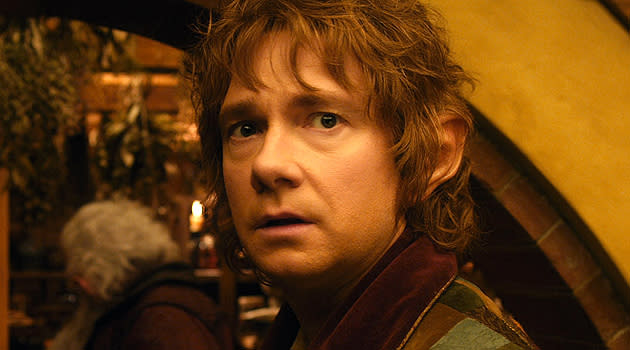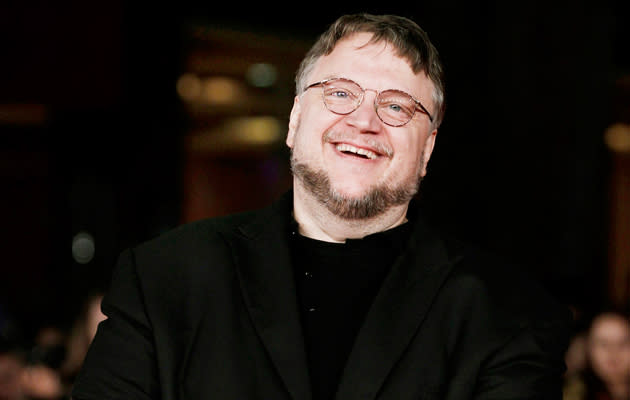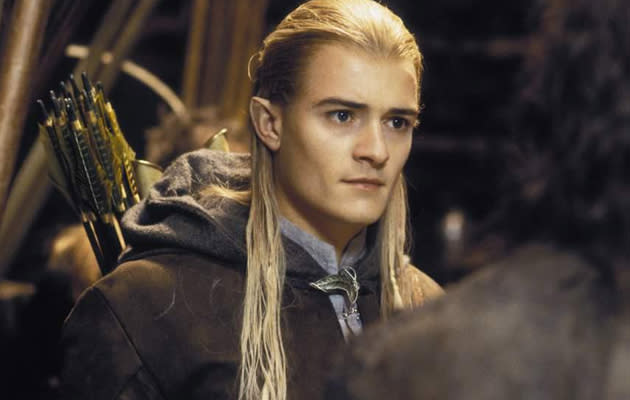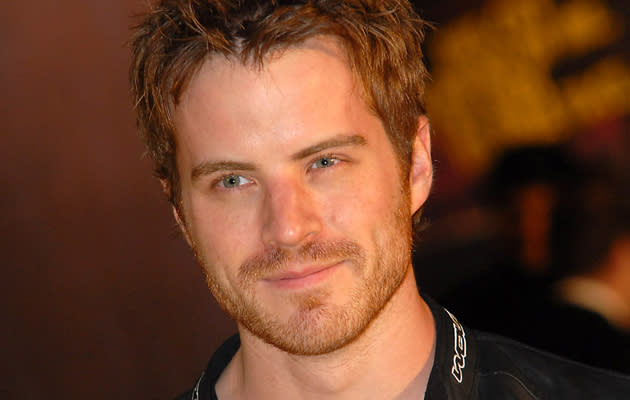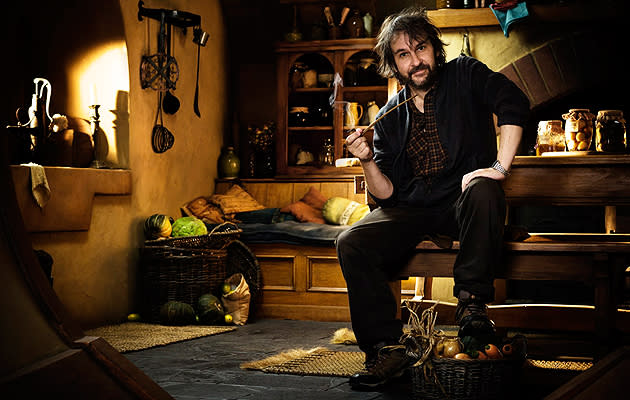The Hobbit: Ten things you should know
1) Why did it take so long?
'The Hobbit' adaptation was first announced back in 2007 and should have been finished by 2010. That was not to be, as the ill-fated project was struck by one problem after another, including the Tolkien estate suing New Line, studio MGM's inexorable slide into bankruptcy, a strike by acting unions that almost saw production leave new Zealand and much, much more. It was epic.
2) What happened to Guillermo del Toro?
The movie's production difficulties meant that Guillermo del Toro — the 'Pan's Labyrinth' and 'Hellboy' helmer who was supposed to direct - quit the project despite spending two years on pre-production. He'd got sick of waiting for MGM to sort themselves, telling TheOneRing:
"In light of ongoing delays in the setting of a start date for filming 'The Hobbit', I am faced with the hardest decision of my life. After nearly two years of living, breathing and designing a world as rich as Tolkien's Middle-earth, I must, with great regret, take leave from helming these wonderful pictures."
Del Toro's incarnation of 'The Hobbit' may've looked much different to Peter Jackson's version. He said he wanted much more animatronics and considered casting Ron Perlman as shape-shifting bear man Beorn, Ian 'Lovejoy' McShane as Thorin the dwarf and Doug Jones as Elvenking Thranduil.
[Related story:The Hobbit isn't finished says Jackson]
[Related story: McKellen broke down on Hobbit set]
3) Who was almost cast as Bilbo?
The identity of Bilbo also generated dozens of rumours, from Tobey Maguire and David Tennant to Jack Black and James McAvoy. Del Toro even said he wanted Ian Holm, who played Bilbo in 'LOTR', to reprise the role. However, in the end the part went to 'The Office' star Martin Freeman.
4) Which 'Lord Of The Rings' actors are back?
Holm would eventually make a cameo, and joined a long list of 'Lord Of The Rings' stars returning to Middle-earth, even if their characters weren't in 'The Hobbit' book. This included Elijah Wood's Frodo, Cate Blanchett's Galadriel, and Orlando Bloom's Legolas. Evangeline Lilly has also been cast as Tauriel, a female elf who doesn't appear in any of the books. A rarity.
5) How did Christopher Lee shoot his scenes?
Another Middle-earth veteran back for more is Christopher Lee, as evil wizard Saruman (also not referenced in 'The Hobbit' books). Sadly, the 90-year-old legend was a bit too frail to make the punishing 24-hour flight over to New Zealand, so Peter Jackson let him shoot his scenes in Pinewood Studios, near London.
6) What rights do the filmmakers own?
Which companies own what bits of the Tolkien universe is a complicated issue we don't have space for here. Put simply, Jackson and New Line CAN make films based on 'The Hobbit' and 'The Lord Of The Rings' books, but CAN'T adapt any of the fantasy author's other Middle-earth stories, such as 'The Silmarillion' and 'Unfinished Tales Of Numenor And Middle Earth'. It's why the director turned to the Appendixes in 'The Return Of The King' to plug the gaps between his two series.
7) What happened to Robert Kazinsky?
Ex-'Eastenders' star Kazinsky was cast as Fili in the series, but left in 2010 for unexplained 'personal reasons', just a few weeks into the production. After quitting, he tweeted:
"Thanks for all your support, Peter and team have been the most wonderful and supportive team to work for and it's with a truly sad heart that things have turned out this way. 'The Hobbit' will go on to be as great as I've seen and I will miss the family and friends that I've here, From every disaster I've tried to make an opportunity."
That's cleared that up.
8) Why did the technology set tongues wagging?
There's two pieces of kit used in 'The Hobbit' that made headlines this year. First is Jackson's decision to shoot in high-resolution RED Epic cameras, which record video at 48 fps, rather than the usual 24fps. When the director showcased the footage earlier this year, it got a mixed response; some felt it was more life-like than traditional digital, others found it cold and 'un-film-ic'. Jackson reckons it takes a few minutes to get used to it.
Second is the SLAVE MOTION CONTROL technology. In basic terms, it allows different-sized characters (say Gandalf and Bilbo) to be on two different soundstages but filming the same scene, thanks to hooked-up camera movement. It's a step up from the ingenious low-fi tricks used in 'Lord Of The Rings', but Ian McKellen recently said he hated filming all his scenes on his own (his character is much taller than most of the others).
9) Why was it split into three parts?
'The Hobbit' was a double bill until July this year when Jackson unexpectedly announced it would become a trilogy. In a Facebook post, he said:
"It has been an unexpected journey indeed, and in the words of Professor Tolkien himself, "a tale that grew in the telling."
He added: "Recently Fran, Phil and I… watched for the first time an early cut of the first movie - and a large chunk of the second. We were really pleased with the way the story was coming together, in particular, the strength of the characters and the cast who have brought them to life. All of which gave rise to a simple question: do we take this chance to tell more of the tale? And the answer from our perspective as the filmmakers, and as fans, was an unreserved 'yes'.
"We know how much of the story of Bilbo Baggins, the Wizard Gandalf, the Dwarves of Erebor, the rise of the Necromancer, and the Battle of Dol Guldur will remain untold if we do not take this chance. The richness of the story of 'The Hobbit', as well as some of the related material in the appendices of 'The Lord Of The Rings', allows us to tell the full story of the adventures of Bilbo Baggins and the part he played in the sometimes dangerous, but at all times exciting, history of Middle-earth."
10) What do the titles mean?
So what will they be called? Part 1 is 'An Unexpected Journey', which echoes the opening chapter name in the book - 'An Unexpected Party'.
The middle film's title 'The Desolation Of Smaug' has no direct equivalent in the books, but refers to the fiery devastation wrought by the story's dragon antagonist on Lake-Town.
The finale is 'There And Back Again' - the alternate title given to 'The Hobbit' by Bilbo in the book. It could also reference the film taking us back to the beginning of 'The Fellowship Of The Ring'.
'The Hobbit: An Unexpected Journey' is released in the UK on 13 December.

 Yahoo Movies
Yahoo Movies 